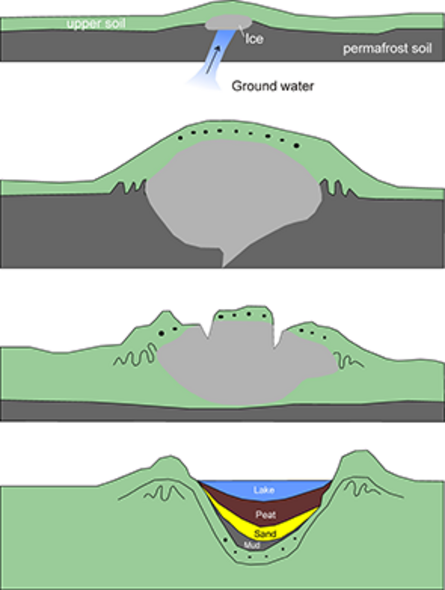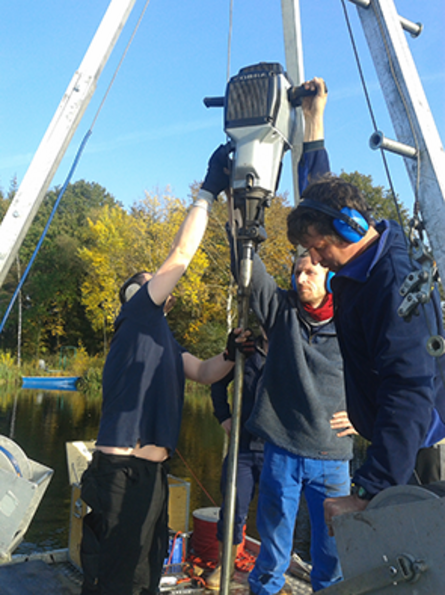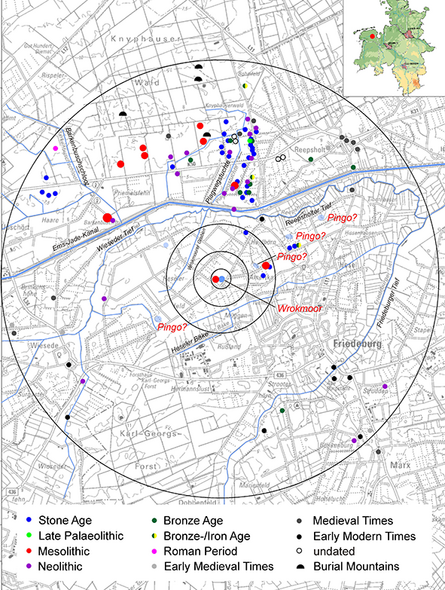Interdisciplinary investigations on pingo remnants as environmental archives – reconstruction of mesolithic environmental conditions in Northwestern Germany
This project was designed to gain a first impression of sedimentation processes, organic remains (pollen) and archaeological finds in pingo remnants in Northwestern Germany.
Pingo remnants are remains of subsurface ice lenses in permafrost regions. Fed by ground or melting water they grow to hills up to 70 m high, so-called pingos. This kind of landscape structure could also be found during the last ice age in areas that were not covered with glaciers . Due to Holocene climate warming the ice cores in the pingos melted away to produce little lakes surrounded by a flat rampart. Today these lakes are often covered by bogs. The appearance of pingos in Northwestern Germany has just recently come to scientific interest. In the course of this project three pingo remnants have been investigated by several sediment cores. These are Wrokmoor and Timmeler Frauenmeer in East Frisia and Weißer See near Heinbockel, Stade district.
The sediment cores have been used for palynological and geochemical analysis. The pollen analysis showed the vegetation history of the pingo remnants surrounding in undisturbed sequences.
Archaeological proofs for the use of pingo remnants during earlier periods could only be found at Wrokmoor. There was a Mesolithic surface scatter at inner frame of the rampart. A wider search for archaeological sites at pingo remnants showed that there is a big number of Mesolithic sites in East Frisia close to small depressions.



